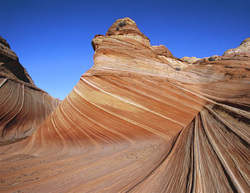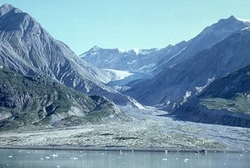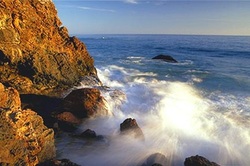Erosion
The process known as weathering breaks up rocks so that they can be carried away by the process known as erosion. Water, wind, ice, and waves are the agents of erosion that wear away at the surface of the earth.
Water Erosion

Water is the most important erosional agent and erodes most
commonly as running water in streams. However, water in all its forms is erosional. Raindrops (especially in dry environments) create splash erosion that moves tiny particles of soil. Water collecting on the surface of the soil collects as it moves towards tiny rivulets and streams and creates sheet erosion.
commonly as running water in streams. However, water in all its forms is erosional. Raindrops (especially in dry environments) create splash erosion that moves tiny particles of soil. Water collecting on the surface of the soil collects as it moves towards tiny rivulets and streams and creates sheet erosion.
Wind Erosion

Erosion by wind is known as aeolian (or eolian) erosion
(named after Aeolus, the Greek god of winds) and occurs almost always in deserts. Aeolian erosion of sand in the desert is partially responsible for the formation of sand dunes. The power of the wind erodes rock and sand.
(named after Aeolus, the Greek god of winds) and occurs almost always in deserts. Aeolian erosion of sand in the desert is partially responsible for the formation of sand dunes. The power of the wind erodes rock and sand.
Ice Erosion

The erosive power of moving ice is actually a bit greater than the power of water but since water is much more common, it is responsible for a greater amount of erosion on the earth's surface. Glaciers can perform to erosive functions - they pluck and abrade. Plucking takes place by water entering cracks under the glacier, freezing, and breaking off pieces of rock that are then transported by the glacier. Abrasion cuts into the rock under the glacier, scooping rock up like a bulldozer and smoothing and polishing the rock surface.
Wave Erosion

Waves in oceans and other large bodies of water produce coastal erosion. The power of oceanic waves is awesome, large storm waves can produce 2000 pounds of pressure per square foot. The pure energy of waves along with the chemical content of the water is what erodes the rock of the coastline. Erosion of sand is much easier for the waves and sometimes, there's an annual cycle where sand is removed from a beach during one season, only to be returned by waves in another.
